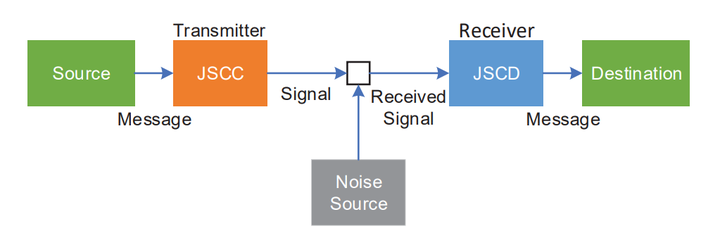
Abstract
In order to provide ultra low-latency and high energy-efficient communication for intelligences, the sixth generation (6G) wireless communication networks need to break out of the dilemma of the depleting gain of the separated optimization paradigm. In this context, this paper provides a comprehensive tutorial that overview how joint source-channel coding (JSCC) can be employed for improving overall system performance. For the purpose, we first introduce the communication requirements and performance metrics for 6G. Then, we provide an overview of the source-channel separation theorem and why it may not hold in practical applications. In addition, we focus on two new JSCC schemes called the double low-density parity-check (LDPC) codes and the double polar codes, respectively, giving their detailed coding and decoding processes and corresponding performance simulations. In a nutshell, this paper constitutes a tutorial on the JSCC scheme tailored to the needs of future 6G communications.